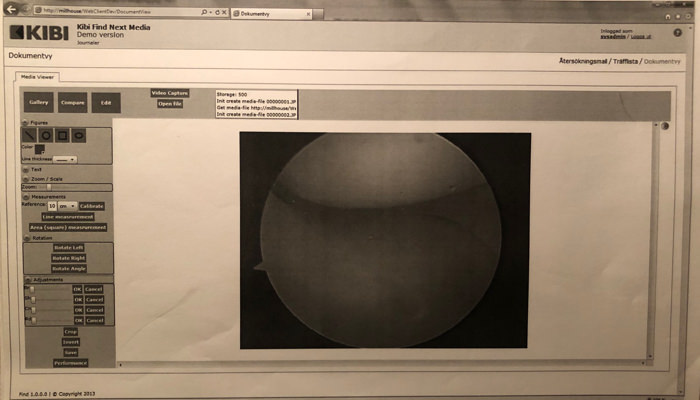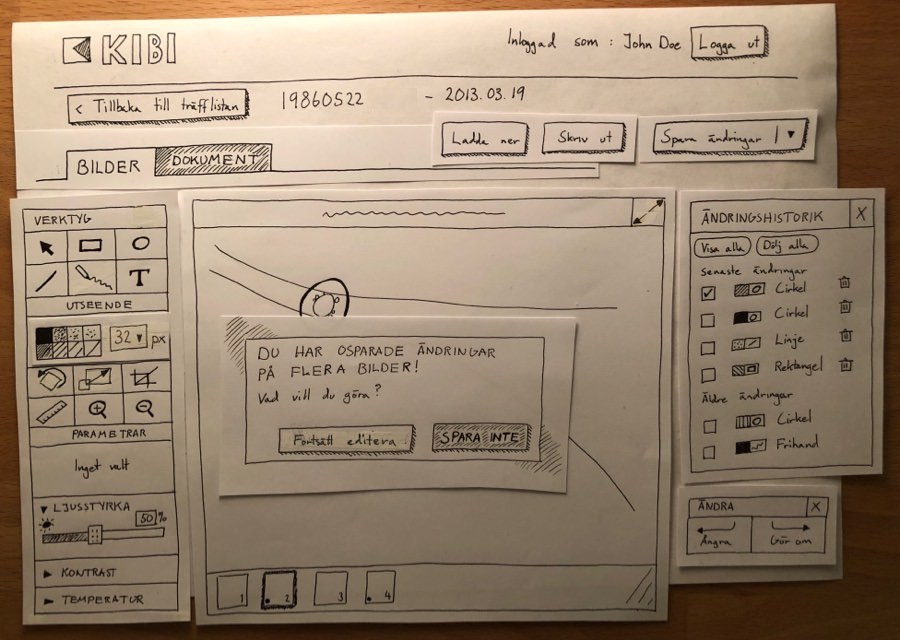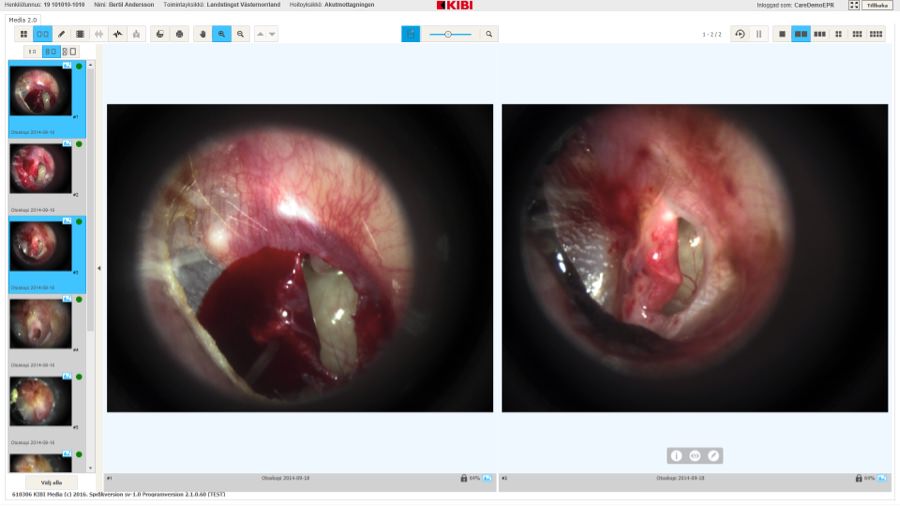
Helping hospital staff handle patient video and images more efficiently
March – August 2013 (Part-Time)
UX Designer
In 2013, I helped medtech company KIBI (acquired by Omda in 2019) design a web app that hospital staff use to handle, compare, and edit patient video and images. It’s used in county councils in Sweden.
Quick summary

KIBI Media is a multimedia management app used by hospital staff. Its goal is to make it easy and efficient to organize, edit, and compare photos and video of a patient’s medical condition and its progress over time. It’s the result of merging two existing web apps.
A team of two designers
My friend and graphic designer Rickard Linder and I worked together on this. We benchmarked photo editing apps, met with hospital staff, and assisted the KIBI developers. I made and usability tested a low-fidelity prototype of the app, while Rickard did its graphic design.
Still a success after four years
Four years later, I reached out to KIBI and asked how the app was doing. I was told it had been a great success and was still being used in county councils all over Sweden.
“KIBI Media is the best app out there and is incredibly easy to use”
– Swedish chief physician on KIBI Media
About KIBI
KIBI was a Swedish software development company focusing on medical documentation and diagnostics solutions for healthcare providers. Their e-health solutions were used at over 100 hospitals and care centers in northern Europe. In 2019, KIBI were acquired by Omda.
Goals to achieve
For merging their two web apps, KIBI had set these goals:
- Improve usability of existing features
- Add new sought-after features, with great usability
- Take the visual design of the new app to the next level

Bechmarking photo editing apps
Immediately, Rickard and I started analyzing current popular photo editing apps on the market. After benchmarking, we made educated guesses on must-have features with valuable input from KIBI.
We then drew whiteboard sketches of the new app and discussed early ideas for graphic design.
Spending a day with a hospital photographer
For learning more about our users, Rickard and I flew to a hospital in northern Sweden where we spent a full day with their photographer. We interviewed him and observed him doing everyday tasks.
We were surprised to see how many different pieces of software the photographer was using throughout his day
It was obvious a lot of time could be saved if this new app could offer the same features as his current software stack.
Drawing paper wireframes of the entire app
With our benchmarking done and our insights from our day with the photographer summarized, we got to work!
I started wireframing of the app, including even the smallest features. For saving time I drew on paper, which Rickard would later turn into high-fidelity sketches. The wireframes showed how to do tasks like:
- Import photos from your computer
- Compare different versions of these photos
- Adjust color and contrast of photos
- Draw overlays on photos
Usability testing the wireframes with both beginners and photography geeks
For usability testing, I got in touch with five coworkers at HiQ that were interested in photo editing. Some were beginners, others were total photography geeks. I had them perform tasks on an elaborate low-fidelity prototype based on my wireframes.
After summarizing the sessions, I knew we had nailed most of the design. We only had to adjust minor details. Our benchmarking and time with the photographer had paid off!


Finalizing graphic design and supporting the developers
Once I had improved the wireframes based on the feedback, Rickard started working on graphic design. He kept me in the loop, listened to feedback, and included several of my ideas.
When were content with the high-fidelity sketches, we presented it to the developers. Throughout the rest of the project, we regularly met with them for helping them implement the design.
KIBI’s developers told us it was great to work with designers who knew some programming.
Getting rid of precious pixels
Since KIBI Media would run in a web browser and many users were still using small monitors, we had to trim as many pixels as possible. We spent lots of time reducing padding, margins, and trimming UX Copy without trying to hurt usability. It was both fun and frustrating.
Result and impact
Four years later, I reached out to KIBI and asked how the app was doing. I was told it had been a great success and was still being used in county councils all over Sweden.
The project lead even shared a fantastic quote from a chief physician he had spoken to a couple of times.
“KIBI Media is the best app out there and is incredibly easy to use”.
– Swedish chief physician on KIBI Media


How it made me feel
On a daily basis, hospital staff are dealing with large amounts of stress. Unfortunately, they also have to deal with software with poor usability. However, if this software is well-designed it can save time and energy.
Hence, I take great pride in this kind of design work. In this project, we definitely made a positive difference. That feelt fantastic!
/Alexander